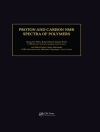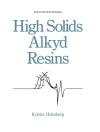Edited by two renowned medicinal chemists who have pioneered the development of personalized therapies in their respective fields, this authoritative analysis of what is already possible is the first of its kind, and the only one to focus on drug development issues.
Numerous case studies from the first generation of ‘personalized drugs’ are presented, highlighting the challenges and opportunities for pharmaceutical development. While the majority of these examples are taken from the field of cancer treatment, other key emerging areas, such as neurosciences and inflammation, are also covered.
With its careful balance of current and future approaches, this handbook is a prime knowledge source for every drug developer, and one that will remain up to date for some time to come.
From the content:
* Discovery of Predictive Biomarkers for Anticancer Drugs
* Discovery and Development of Vemurafenib
* Targeting Basal-Cell Carcinoma
* G-Quadruplexes as Therapeutic Targets in Cancer
* From Human Genetics to Drug Candidates: An Industrial Perspective on LRRK2 Inhibition as a Treatment for Parkinson’s Disease
* Therapeutic Potential of Kinases in Asthma
* DNA Damage Repair Pathways and Synthetic Lethality
* Medicinal Chemistry in the Context of the Human Genome
and many more
Содержание
Foreword
Preface
A Personal Foreword
Acronyms
MEDICINAL CHEMISTRY APPROACHES TO CREATING TARGETED MEDICINES
Introduction
Role of Medicinal Chemistry in Drug Discovery
Evolution of Molecular Design for Subsets of Patiens
Combinations for Effective Therapies
Biomarkers in Targeting Patiens
Emerging Field of Epigenetics
Systems Chemical Biology
Theranostics and Designing Drug Delivery Systems
Rapid Progress in Further Personalizing Medicine Expected
DISCOVERY OF PREDICTIVE BIOMARKERS FOR ANTICANCER DRUGS
Introduction
‘Oncogene Addiction’ as a Paradigm for Clinical Implementation of Predictive Biomarkers
Cancer Cell Lines as a Model System for Discovery of Predictive Biomarkers
Modeling Drug Resistance to Discover Predictive Biomarkers
Discovery of Predictive Biomarkers in the Context of Treatment Combinations
Discovery of Predictive Biomarkers for Antiangiogenic Agents
Gene Expression Signatures as Predictive Biomarkers
Current Challenges in Discovering Predictive Biomarkers
Future Perspective
CRIZOTINIB
Introduction
Discovery of Crizotinib (PF-02341066)
Kinase Selectivity of Crizotinib
Pharmacology of Crizotinib
Human Clinical Efficacies of Crizotinib
Summary
DISCOVERY AND DEVELOPMENT OF VEMURAFENIB: FIRST-IN-CLASS INHIBITOR OF MUTANT BRAF FOR THE TREATMENT OF CANCER
Background
Discovery and Development of Vemurafenib (PLX4032)
Pharmacology
Clinical Efficacy and Safety
Companion Diagnostic (cobas 4800) Development
Synthesis
Summary
TARGETING BASAL-CELL CARCINOMA: DISCOVERY AND DEVELOPMENT OF VISMODEGIB (GDC-0449), A FIRST-IN-CLASS INHIBITOR OF THE HEDGEHOG PATHWAY
Introduction
Hedgehog and Basal-Cell Carcinoma
Cyclopamine as an SMO Antagonist
Small-Molecule Inhibitors of SMO
Preclinical Characterization of Vismodegib
Vismodegib Clinical Experience in Phase 1
G-QUADRUPLEXES AS THERAPEUTIC TARGETS IN CANCER
Introduction
Quadruplex Fundamentals
Genomic Quadruplexes
Quadruplexes in Human Telomeres
Quadruplexes as Anticancer Targets — Evidence from In Vivo Studies
Native Quadruplex Structures
Quadruplex-Small-Molecule Structures
Developing Superior Quadruplex-Binding Ligands
Conclusions
IDENTIFYING ACTIONABLE TARGETS IN CANCER PATIENS
Introduction and Background
Overview of Genomic Sequencing and Its Impact on the Identification of Actionable Mutations
Actionable Targets by Clinical Molecular Profiling: The OICR/PMH Experience
Some Exeriences of Other Clinical Oncology Molecular Profiling Studies
Identifying Secondary and Novel Mutations through Molecular Profiling
Understanding and Targeting Resistance Mutations: A Challenge and an Opportunity for NGS
Concluding Remarks and Future Perspectives
DNA DAMAGE REPAIR PATHWAYS AND SYNTHETIC LETHALITY
Introduction
DNA Damage Response
Synthetic Lethality
Lead Case Study: PARP Inhibitors
Additional Case Studies
Screening for Synthetic Lethality
Contextual Synthetic Lethality Screening
Cancer Stem Cells
Conclusions and Future Directions
AMYLOID CHEMICAL PROBES AND THERANOSTICS: STEPS TOWARD PERSONALIZED MEDICINE IN NEURODEGENERATIVE DISEASES
Introduction
Amyloid Plaques as the Biomarker in AD
Detecting Amyloid Plaques in Patiens: From Alois Alzheimer to Amyvid and Beyond
Same Causes, Same Imaging Agents?
Theranosticcs in AD
Conclusions and Perspectives
FROM HUMAN GENETICS TO DRUG CANDIDATES: AN INDUSTRIAL PERSPECTIVE ON LRRK2 INHIBITION AS A TREATMENT FOR PARKINSON’S DISEASE
Introduction
Biochemical Studies of LRRK2 Function
Cellular Studies in LRRK2 Function
Animal Models of LRRK2 Function
Clinical Studies of LRRK2-Associated PD and Future Prospects
Small-Molecule Inhibitors of LRRK2
Structural Models of the LRRK2 Kinase Domain
Strategies Used to Identify LRRK2 Kinase Inhibitors (Overview)
Conclusions
THERAPEUTIC POTENTIAL OF KINASES IN ASTHMA
Introduction
Mitogen-Activated Protein Kinases
Nonreceptor Protein Tyrosine Kinases
Receptor Tyrosine Kinases
Phosphatidylinositol-3 Kinases
AGC Kinases
Ik B Kinase
Other Kinases
Conclusions: Future Directions
DEVELOPING TARGETED PET TRACERS
Об авторе
Karen Lackey is currently the founder and Chief Scientific Officer of Jan Aush, a drug discovery company focused on creating life-saving medicines in inflammation, oncology, and kinase and signal inhibition. She joined Hoffmann-La Roche in 2010 as Vice President and Head of Medicinal Chemistry at the Nutley, NJ (USA) site, where she was responsible for oncology, inflammation, virology and new technologies until the site closure in 2013. In her previous role, she was the Vice President of Chemistry, Molecular Discovery Research for Glaxo Smith Kline. Most importantly, she played an active role in the discovery of the dual erb B2/EGFR tyrosine kinase inhibitor, lapatinib, currently marketed as Tykerb. Karen has over 85 publications and patents, principally covering oncology, inflammation, kinase inhibition, gene family molecular design and cellular signaling.
Bruce Roth is currently Vice President of Discovery Chemistry in Genentech Research and Early Development at South San Francisco (USA). Prior to joining Genentech in 2007, he was Vice President of Discovery Chemistry at the Pfizer Global Research and Development Ann Arbor site. Bruce began his career as a medicinal chemist at Warner-Lambert, Parke-Davis in 1982 and is best known as the inventor of Lipitor (atorvastatin calcium), for which he has received numerous awards, including the 2003 American Chemical Society Award for Creative Invention, the 2003 Gustavus J. Esselen Award and the 2013 Perkin Medal. In 2008 he was named one of the American Chemical Society’s Heroes in Chemistry.












